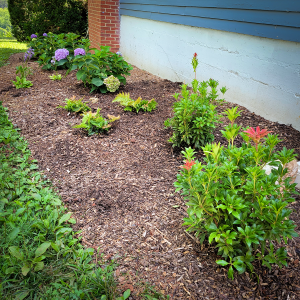We all liked to jump into large piles of leaves as children. However, now that we are homeowners we have the added responsibility of keeping our yards in check. Each fall, mother nature covers our lawn with leaves and there are a number of ways to deal with those fallen leaves. [Read more…]
No Mulch Volcanoes
Benefits of Proper Mulching
Good tree maintenance is common sense – it is what trees need to flourish in nature. In the wild, the forest floor is naturally covered with a layer of decomposing leaves, twigs and other plant material. In urban settings, the most common mulch is made of wood chips of varying types and sizes. [Read more…]


